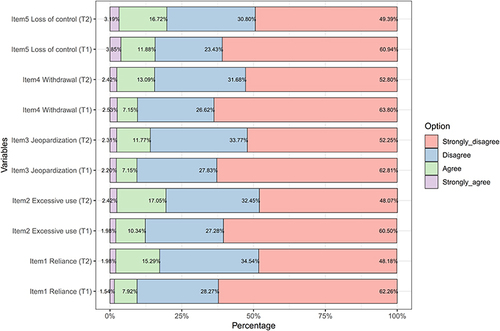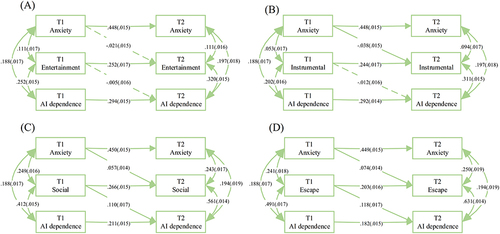Figures & data
Figure 1 The theoretical model of the cross-lagged effect and half-longitudinal mediation effect.

Table 1 The Descriptive Statistics and Correlation Results of the Variables
Figure 2 Prevalence of AI dependence among adolescents by item.

Figure 3 The cross-lagged effects between mental health problems and AI dependence.

Figure 4 The results of the depression → AI use motivation → AI dependence model.

Table 2 The Indirect Effect of Half-Longitudinal Mediation Analysis
Figure 5 The results of the anxiety → AI use motivation → AI dependence model.

